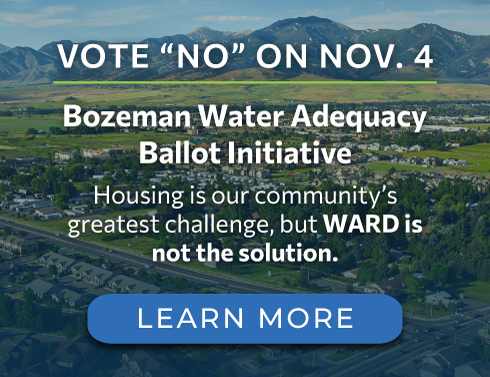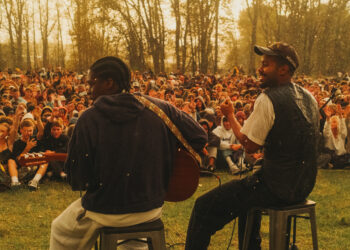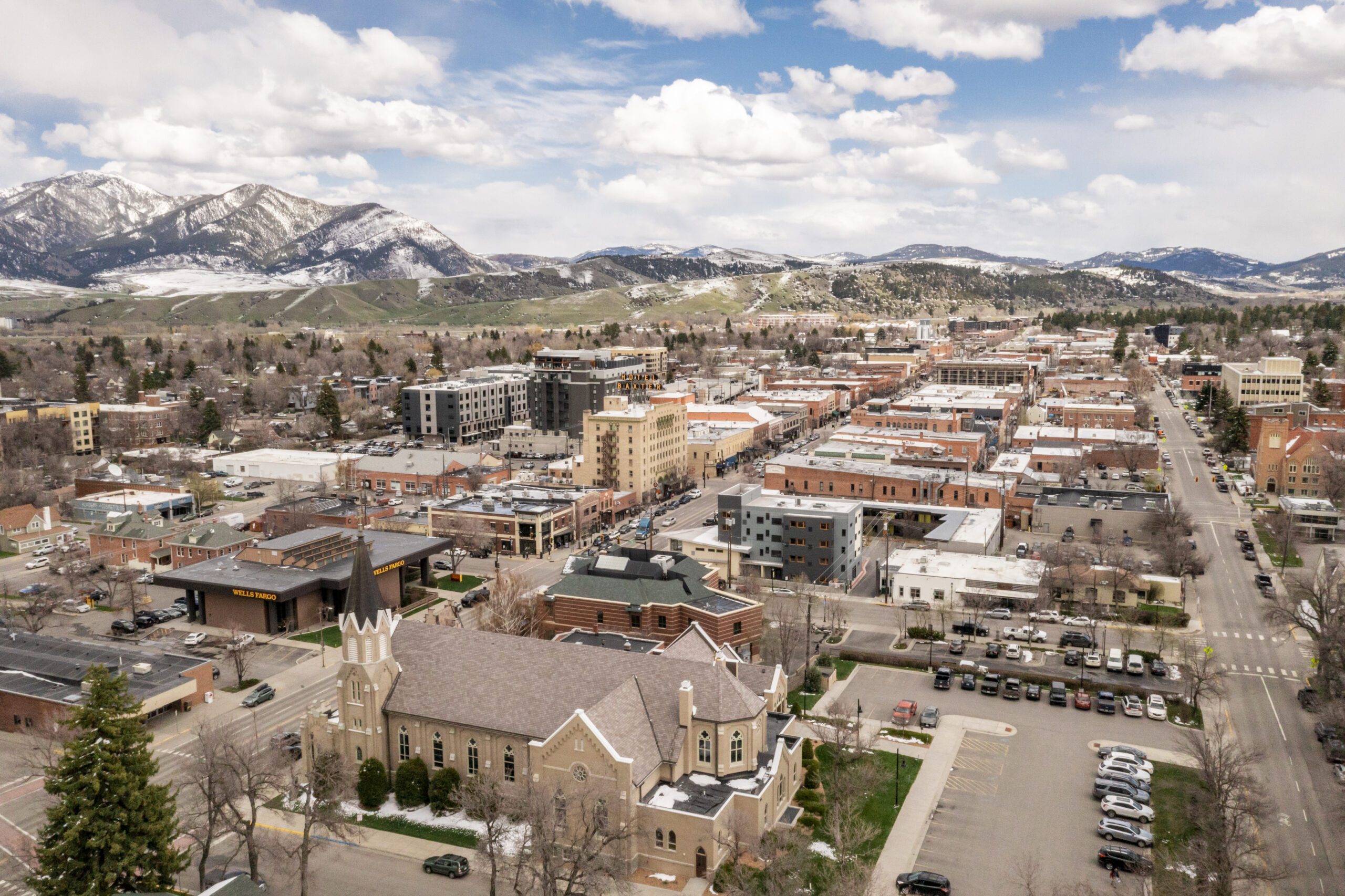By Bay Stephens EBS LOCAL EDITOR
BIG SKY – Ten years ago this month, Lone Peak High School opened its doors for the first time, a major success for the community, one that took two legislative attempts, widespread community support and a lot of hard work.
Then
The addition of a high school was a lynchpin and staying factor for the Big Sky community: In many ways, Big Sky’s lack of a high school was a workforce problem.
“Until 2008 parents had three options for high school: send their teens to a prep boarding school, rent [or] purchase a house in Bozeman, or put students on the bus at 6:45 in the morning,” said Anne Marie Mistretta, the superintendent of Ophir School District from 2005-2010 and current vice president and secretary of Friends of Big Sky Education (FOBSE).
None of the options were ideal for Big Sky, resulting in the steady exodus of families as soon as their oldest children hit middle school, leaving the area starved for workers. Additionally, a high rate of the students that toughed it out on the 43-mile bus rides to Bozeman High were struggling academically, and couldn’t even participate in extracurricular activities.
“Essentially, we had no teenagers here in the community,” Mistretta said. “We also would lose touch with students early on, and it was difficult to follow where they had enrolled in college or where they were off to for life.”
A group of concerned locals, including Mistretta, formed FOBSE between 2003 and 2004 to create a high school, though the organization has done much other education-related work since. But the odds were stacked against the little mountain hamlet.
Montana state law is written to consolidate high schools, according to Mistretta, so for Big Sky to have its own high school was actually barred at the state level because they were already part of the Bozeman High School District. Another obstacle was the Big Sky community, which couldn’t fathom why small-town Big Sky would need its own high school.
“People in Montana see a small school as a focal point of the community, a point of pride and people in Big Sky at that time thought, ‘God, why would we want a really small school?’” said Loren Bough, the current school board chair and a founder of FOBSE along with his wife, Jill. “There was an inability to grasp that a small school could deliver good academic results and grow with the community.”
To top it all off, Bozeman High simply did not want Big Sky to be its own district. From Mistretta and Bough’s perspectives, it was a tooth-and-nail fight to gain a high school.
FOBSE attempted to get enabling legislation through the legislature in 2005, but the effort came up short by 17 votes for fear of repercussions to other high school districts across the state, Mistretta said. FOBSE tried again in 2007, but with a new tack: laser-focused wording that would apply to Big Sky and very few other schools, from the distance a community is to the nearest high school, to the number of high school age students living there, to the danger of road conditions between the community and the school.
“We had to geomap the entire state and make sure that nobody else was 43 miles away, or more, from the high school,” Bough said.
Thanks to the specific language, as well as educational efforts on the part of FOBSE to communicate the Legislature and the governor how the community was being crippled, the 2007 attempt was a success. A vote of local support created Big Sky’s high school district on July 1, 2008.
A transition levy approved by Big Sky constituents in October 2007 allowed the Ophir School District to continue to pay money for Big Sky students to attend Bozeman High School until they had a school of their own. Big Sky voted approval, but it was critical to open the high school quickly.
Another 2007 vote garnered $8.3 million in construction bonds, but the standard gymnasium required for accreditation called for an additional $2 million. Though the district had the taxing ability to ask for more from the community, in light of the recession, the school board consciously chose not to. FOBSE bridged the $2 million gap with privately raised funds.
It goes without saying that voters supported the project every step of the way, and in percentages consistently over 75 percent. This is largely due to the educational work FOBSE did within the community throughout the process of creating a high school.
“The community really pulled together, and like all good ideas, it was an idea that came from the grass roots and had broad, wide acceptance from all the demographics of the community,” Bough said. “For all of us who had spent a lot of time working on it, it was very rewarding.”
When Lone Peak’s doors opened in the fall of 2009, 20 students were enrolled; the school district petitioned Bozeman to grandfather in the remaining 30 students so that they could finish their high school education where they started. However, any middle schoolers entering high school after 2008 were required to attend Lone Peak.
In the spring of 2010, Lone Peak High saw off its first two graduates.
“It was a hectic, heady time,” Mistretta laughed. “I can look back on it and smile. During that time, it was unbelievably intense. You could see how tight the timeline was, and how important it was to make it happen in a timely fashion.”
Now
Fast forward 10 years and the results are evident.
Teens can be seen working and interning at businesses throughout Big Sky, and though the community still has workforce strains, the mass exodus of families with teens has ceased. Nonprofits throughout Big Sky program for high schoolers, and the community has a place to watch cheer on high school sports.
The high school allowed local curriculum control, and took Big Sky off the hook for paying an inordinate amount of taxes for Bozeman’s high school, despite a relatively small share of Big Sky students comprising the school’s population.
“I think that’s very much an unheralded success of what we’ve done,” Bough said. “We’ve allowed our tax dollars to stay in our community.”
Today, Lone Peak High School is the fastest growing—in terms of percent growth—best performing high school in the state. U.S. News and World Report ranked it the No. 1 school in the state of Montana this spring, and the school’s ACT scores were 33 percent higher than the state average.
This spring, LPHS graduated 16 seniors, nine of whom were pursuing diplomas from International Baccalaureate, a program the high school was authorized to offer beginning in 2017.
“We were able to mix the best parts of a small-town, Class C school in Montana with the academic rigor that is expected of a private school, or a high-performing, out-of-state school that many of our citizens are more familiar with,” Bough said. “The IB system really gave us academic rigor, accountability—international accountability—and it’s a system that’s designed for some teacher turnover, which is inevitable for us.”
But currently underway is the district’s first teacher housing project, which will help with teacher retention.
The high school also stands on the cusp of moving from Class C to Class B in terms of high school size, which will usher in a swath of changes, including 11-man football and the potential for a Big Horn soccer team, both of which will require a new field.
“Moving to Class B in the state of Montana is really quite a significant thing,” said BSSD superintendent Dustin Shipman. “Most schools [in Montana] are going down in classification, because their enrollments are dropping.”
All things held constant, the high school could see 23 percent growth over the next three years as large middle school classes move in. Barring any drastic reductions in student body size, Lone Peak is on track to be in Class B for athletics by the Fall of 2021.
The school district accepted a contract with A&E Architecture out of Bozeman this summer to draw up a master facility plan for the campus. Though the process has yet to begin, the district will be seeking the input of community members to prepare for the transition to Class B.
The past 10 years have been replete with change for Big Sky and Lone Peak High; the coming decade is bound to mirror them. Needless to say, the addition of a high school to Big Sky was yet another watershed for the young community.














